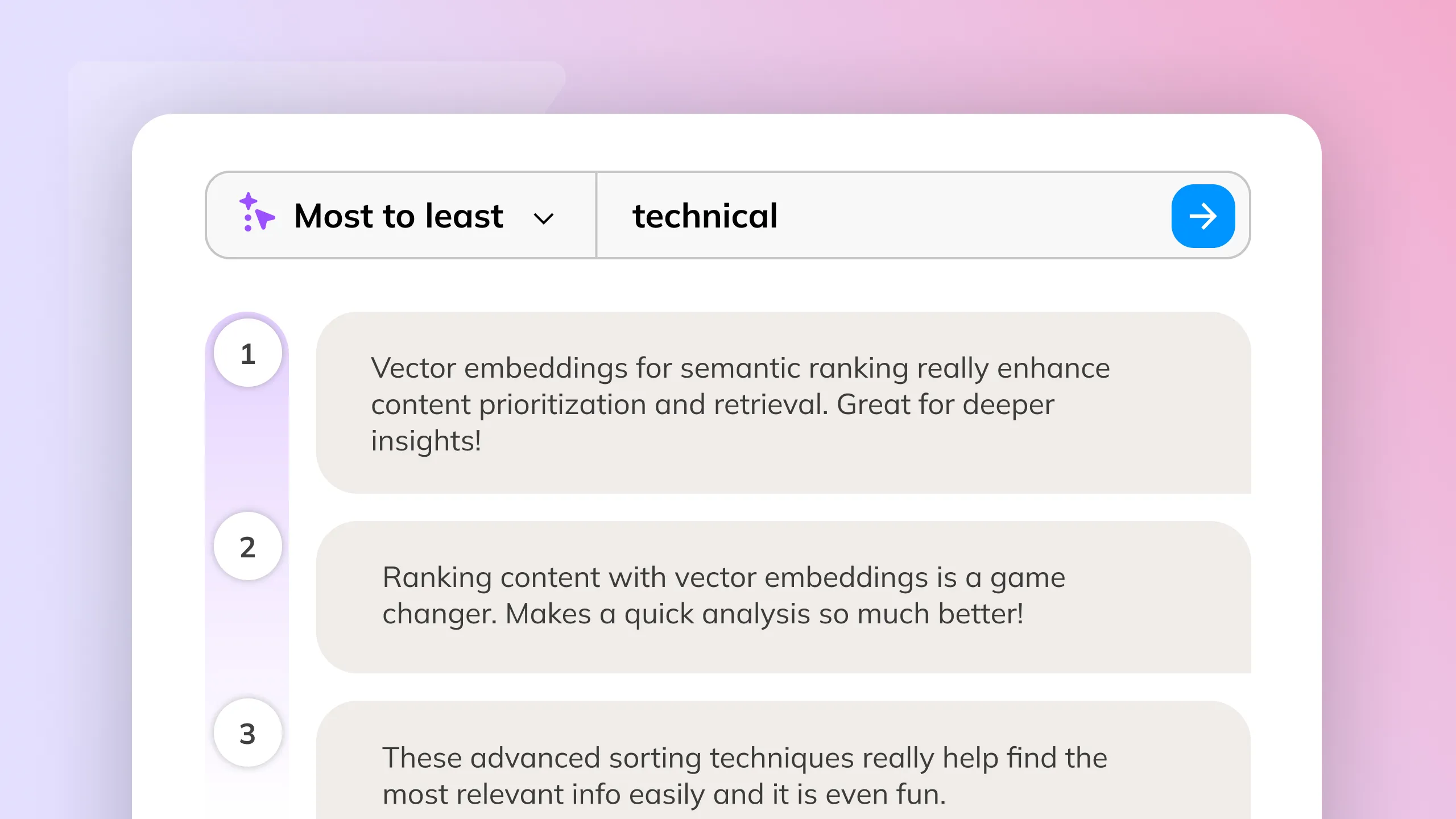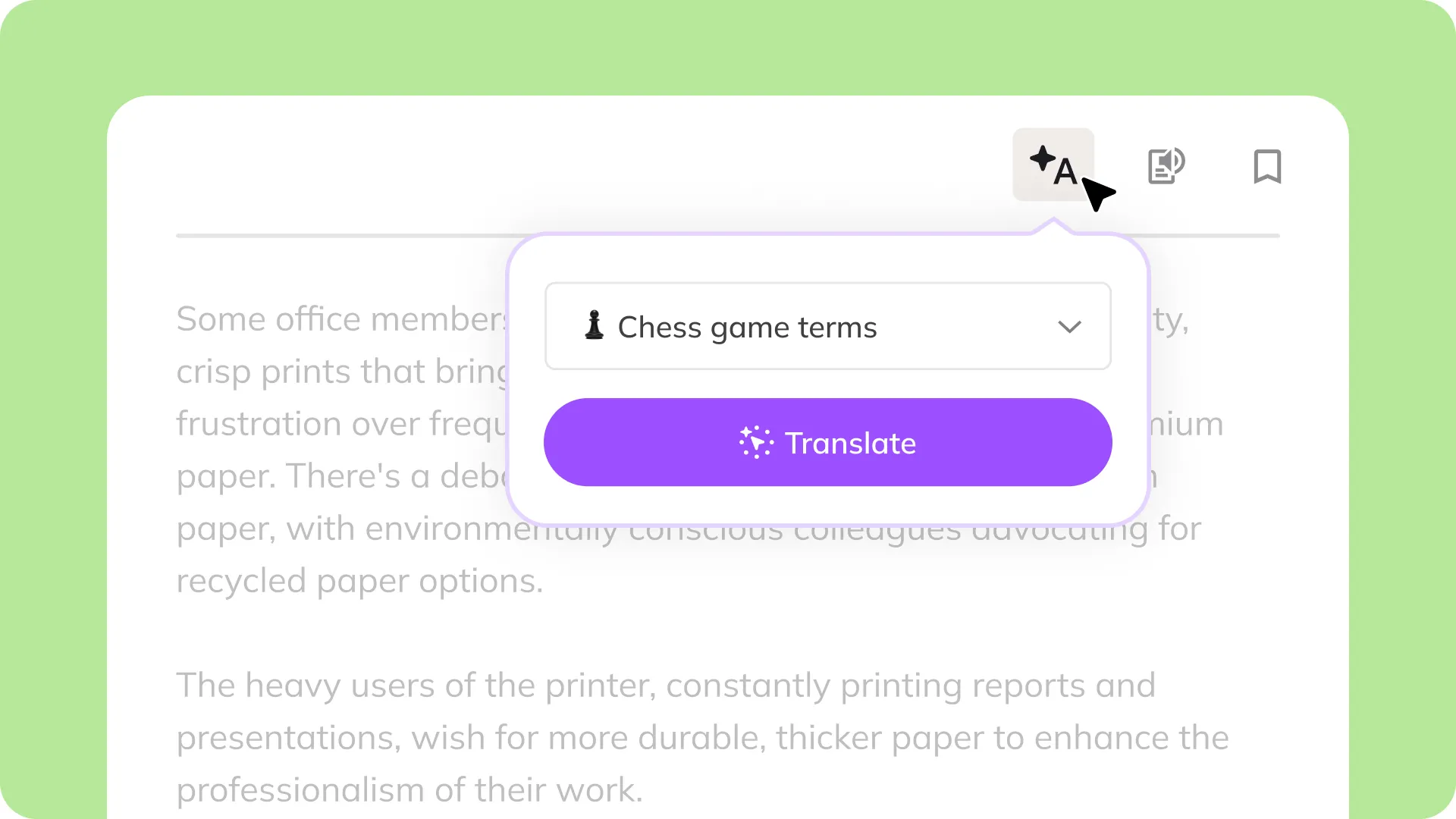Semantic ranking
Embedding models can rank content along virtually any dimension. This capability provides significant value by enabling users to explore and analyze the embeddings to create a spectrum of any features.


When searching for information, I want to rank content semantically so I can quickly access the most relevant information and make insightful comparisons.


- Enhanced Information Retrieval: By ranking content based on semantic relevance, users can quickly access the most pertinent information, fostering creative ways of searching.
- Insightful Comparisons: Displaying results along a ranked spectrum facilitates comparison of relevant attributes, providing valuable insights into the relationships and similarities between different pieces of content.
- Relevancy Thresholds: A semantic ranker can incorporate a relevancy threshold to exclude results that are highly irrelevant, ensuring higher quality and more useful outputs.

More of the Witlist

Embedding models can rank data based on semantic meaning, evaluating each individual segment on a spectrum to show its relevance throughout the artifact.

Generating multiple outputs and iteratively using selected ones as new inputs helps people uncover ideas and solutions, even without clear direction.

Provide relatable and engaging translations for people with varying levels of expertise, experience and ways of thinking.

Referencing nested data from your database in the form of tags can simplify the creation of elaborate prompt formulas.

AI excels at classifying vast amounts of content, presenting an opportunity for new, more fluid filter interfaces tailored to the content.

Generative AI can provide custom types of input beyond just text, like generated UI elements, to enhance user interaction.